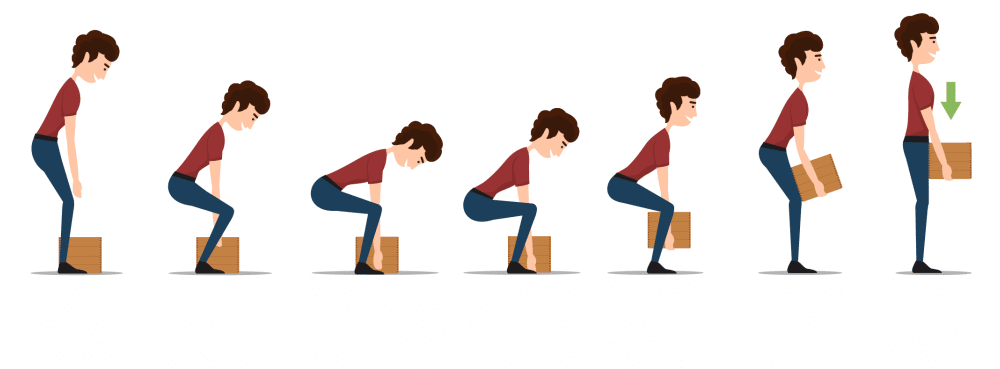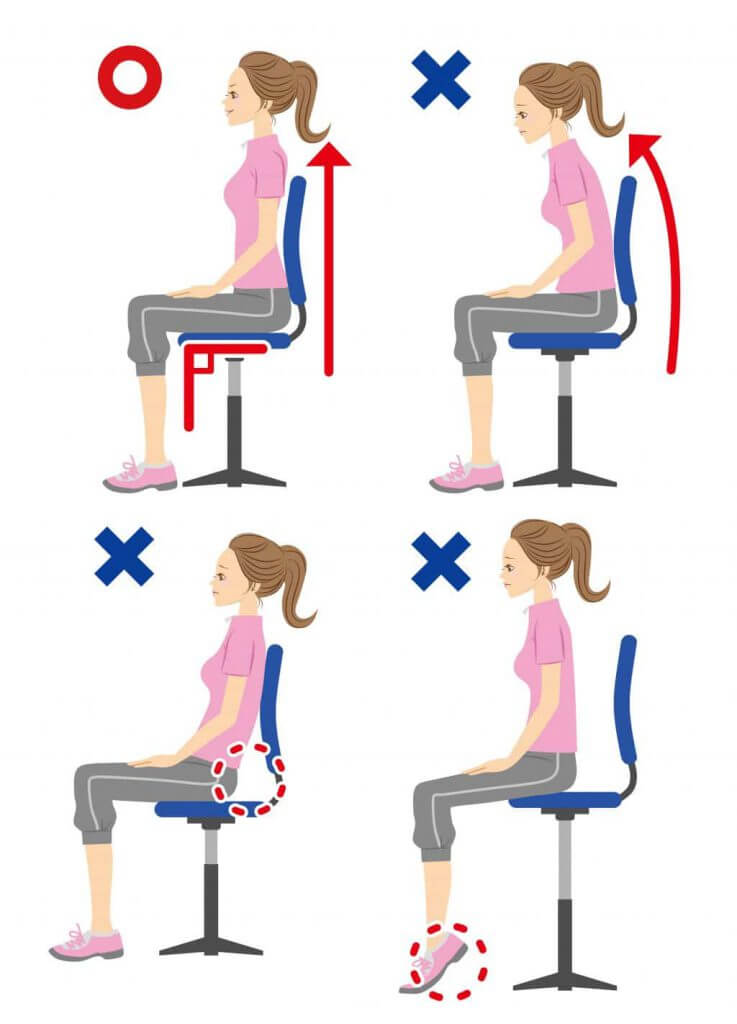
These daily mouvements damage your pelvic floor
We often only become aware of the importance of the pelvic floor too late. Wet panties, a laughing that ends badly, or feeling some pressure on the lower abdomen… Urinary incontinence and organ descents are the consequences of (sometimes daily) damage to our pelvic floor. So what are factors and actions that can damage our important but little-known pelvic floor muscles?
CARRYING HEAVY THINGS
We are told that carrying heavy loads is bad for our back. But one thing is certain, the same is true for our pelvic floor. Whether you are carrying your child, your shopping bags, or books, abdominal pressure impacts your pelvic floor. Remember to distribute the loads you carry well and, above all, to systematically contract your pelvic floor before each effort.

When picking up or moving objects, think about applying good habits. It is recommended to bend your knees before bending over to pick up an object. Indeed, we all have the reflex to just bend over while keeping our legs straight. However, to get up, a push is exerted on the abdomen and therefore on the pelvic floor. Remember to have your forearms resting on your thighs, move your bottom backward and keep your back straight. The same applies when the object is located at a height. To avoid damaging your pelvic floor, align your shoulders with your pelvis while contracting your pelvic floor.

PRACTICING A SPORT
Indeed, physical activity is recommended to stay fit and healthy. But we have to take care because some sports overload our pelvic floor. Sport, especially at a high level, can lead to bladder control problems. The pelvic floor is very much in demand when doing sports such as running, volleyball, or tennis, for example. These sports, like trampoline or horseback riding, generate repetitive bumps. In consequence, this causes the organs to drop and they will weigh on the pelvic floor. The abdominal pressure thus disturbs the support muscles. It can reach 10 to 20 times the pressure it can handle. Don’t halloo till you’re out of the wood! Be careful of abdominal pressure that those activities can put on the pelvic floor. “Carried” sports such as cycling, swimming, or skating have a lower impact. They should therefore be preferred.
How to do sports while preserving your pelvic floor? There are alternatives and Audrey will tell you which one. If you want to do abdominal exercises, focus on specific exercises. Scissors or pedaling do not have a negative impact on the pelvic floor.
BEWARE OF FITS OF LAUGHTER, COUGHING, SNEEZING
During a sudden effort (coughing, sneezing or laughing) our diaphragm presses on the pelvic floor and compresses it. It is therefore necessary to have the reflex to contract your pelvic floor when you feel the effort coming to absorb the shock. You may consider turning your head to the side to reduce the pressure on the perineum.
Watch out, smokers! Coughing due to smoking can trigger loss of bladder control. If the pelvic floor is subjected to jolts, it will weaken significantly. When the pressure becomes too high, it will no longer be strong enough. Besides, tobacco interacts with collagen, which plays a role regarding the tonus of your tissue. And therefore also for the pelvic floor.

NATURAL NEEDS
Since we were very young, we have to pee fast and badly. We are forced to anticipate our needs before a long journey or before entering class. And the older you get, the worse it gets. Before a meeting, an appointment, or because we can’t leave our child alone. You have to take your time and take your own pace. We never urinate when we really need to, and this frustration also affects the bladder. It no longer knows when to empty itself, which can lead to urinary tract infections. So you have to take your time. Don’t push to go faster. In this case, you are using the entire pelvic floor. The same goes for constipation. The intense pushing effort made during trying to do your business is putting a strain on your pelvic floor.
Many women still believe that stopping while peeing can be used as pelvic floor training. This can be useful for locating your pelvic floor and learning how to contract it properly. But this must not be repeated under any circumstances. The stopping of the urine affects negatively the reflex of closing the sphincters.
Other factors can also influence the strength of your pelvic floor muscles. Age (aging muscle tissue) or menopause (with hormonal changes) are important factors.
AN UPRIGHT POSTURE, LADIES!
In general, it is difficult to stand upright. You have to imagine having a thread above your head that pulls you up. Easy to say… Once you’ve slumped on your couch, you forget that and the bottom of the pelvis is pushed down and forward. In consequence, this prevents the diaphragm and the pelvic floor from moving. But what are the right postures to adopt? Ideally, you should sit at the edge of the chair, elbows forward, back straight and pelvis in line. On a sofa, stick your bottom to the backrest and place a pillow in the hollow of your back and sit upright. If you feel like you’re leaning forward, move your bottom a few centimeters forward.

During pregnancy, the posture also tends to change and the back is more and more loaded. After childbirth, back strain continues to accumulate. Between carrying the baby, the cosy maxi, or the shopping bag… A bad posture can damage your pelvic floor. Avoid as much as possible bad postures and habits to preserve your pelvic floor and back!
Avoid damaging your pelvic floor
Download the free mobile app Emy – Kegel exercises directly on your smartphone:




